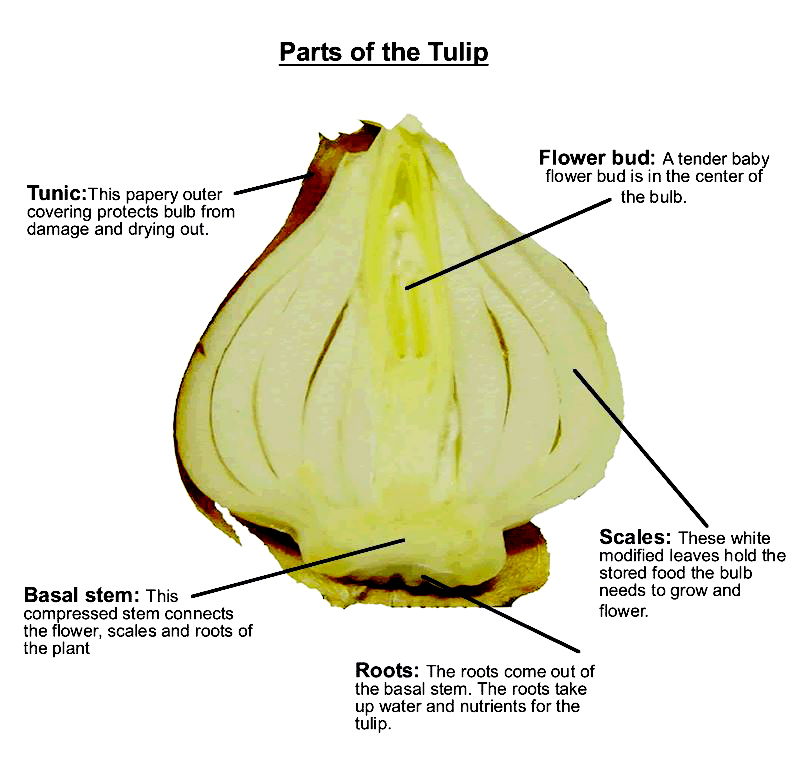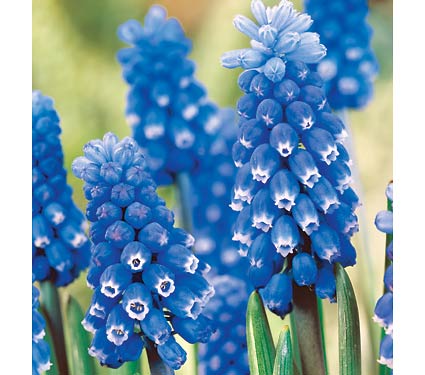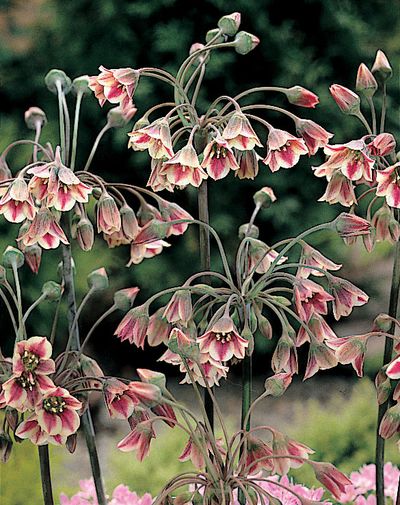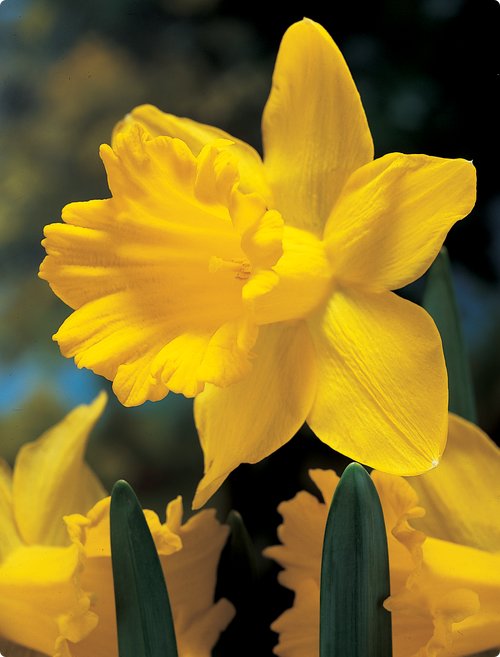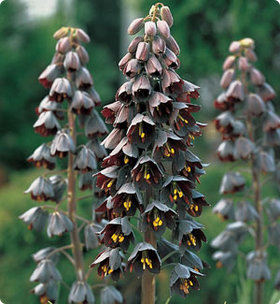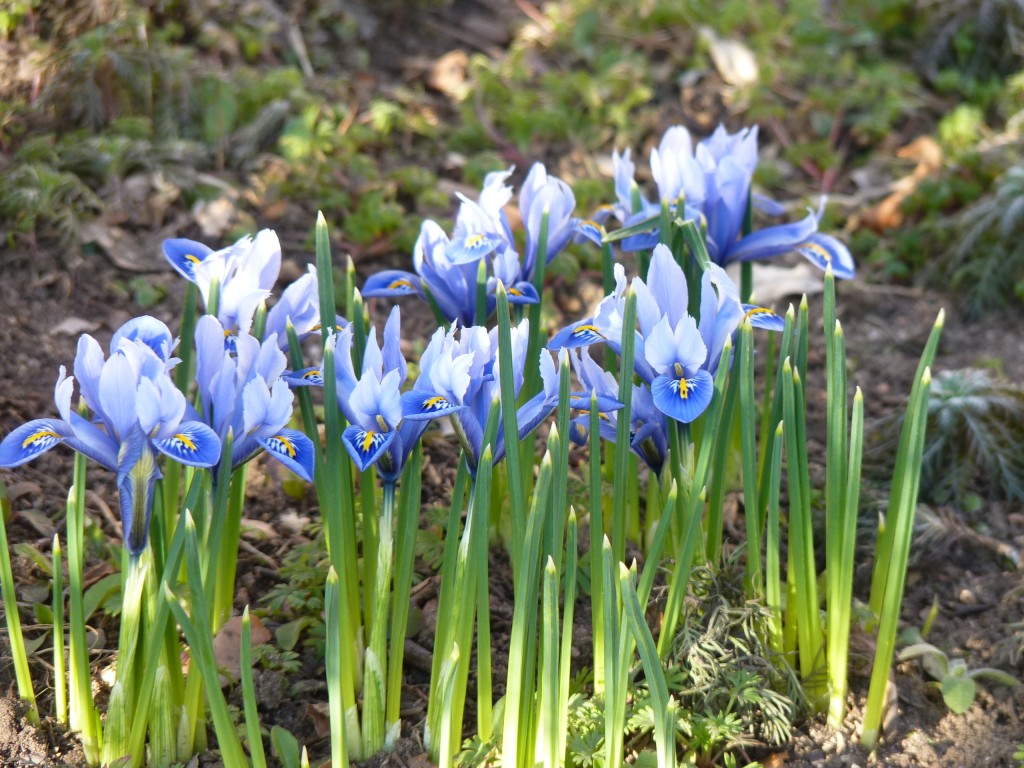
It just wouldn’t be spring without the bright, cheery blooms of tulips, daffodils, and crocus emerging from the ground to usher in the season! If you’ve never tried planting bulbs before, you’ll find it’s both fun and easy to create a beautiful spring display right in your own yard. Surprisingly, the time to plant them is in the autumn!
Why do you plant spring-flowering bulbs in the autumn? It’s because they require a long period of cool temperatures to spark the biochemical process that causes them to flower next spring. Because of that, it’s important to get them into the ground in the autumn before the ground freezes.
What is a bulb?
It’s really a self-contained flower factory! Each bulb has nearly everything the future flower needs to survive the winter and come to life in the spring. If you were to look inside the bulb, you would see a baby flower bud, leaves, roots, stem, and a food supply.
Plan Carefully for Color All Season Long!
With a little planning, you can have blooms starting before the snow melts and continuing into early summer. For an entire season of color, you’ll need to stagger bloom times. Check the packaging to see whether the bulbs are early, middle, or late spring bloomers. Begin by choosing some early bloomers like snowdrops and crocus. Then pick out some colorful tulips, hyacinths, & daffodils. These will provide mid-season color. Lastly, follow up with some of the late-season bloomers like Dutch iris and alliums. Mix or match your color scheme, it’s up to you!
Pay attention to the final height of each flower at maturity. Be sure to plant taller flowers at the back of a bed with shorter blooms in the front. This information is available on the bulb packaging as well. Armed with this information, all that’s left to do is plant them in the ground and wait for spring.
When to plant
You can plant spring flowering bulbs in the autumn after the temperatures cool down, but before the ground freezes. Visit your garden center early in the autumn for the best selection. If you can’t plant your spring bulbs right away, be sure to keep them in a cool, dry location (like a garage or basement) until you can get them in the ground. Warm storage conditions will signal the bulb to begin growing!
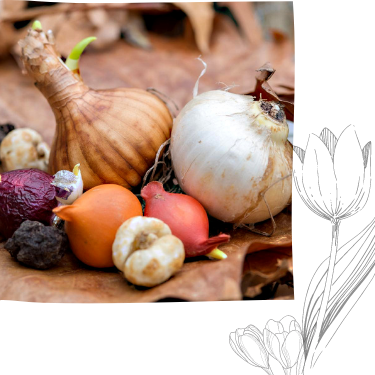
Where Should I Plant Them?
There are several factors to consider. First, look for a sunny location. Bulbs prefer full sun to rejuvenate for future years, so look for a part of your garden where they’ll receive at least six hours of sun each day. Also, look for a location with good drainage. Bulbs do not like “wet feet,” so you won’t want to place them anywhere water tends to collect in your yard. Lastly, consider planting your earliest blooming bulbs in a location you’ll be able to enjoy from inside your home! They’ll be a welcome splash of color on those still-chilly early-spring days, and you won’t have to step outside to enjoy them.
How Deep Should Bulbs be Planted?
You’ll want to dig a hole that’s three to four times the height of the bulb being planted. This means most large bulbs like tulips & daffodils will be planted about six to eight inches deep, while smaller bulbs like crocus will be planted 3-4″ deep.
Preparing to Plant
Your Color Show
After digging a hole to the proper depth, be sure to remove any weeds, rocks or other debris. Bulbs prefer humus-rich soils, so it’s important to add soil amendments like compost or sphagnum peat moss when planting in order to improve both drainage and moisture retention. Add a handful of bulb food or bone meal at the bottom of the hole, then place the bulb into the hole with the pointed tip upwards, and the flatter root end down.

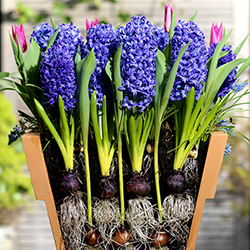
No Yard? No Problem!
You can successfully grow bulbs in containers! Hold your bulbs indoors until mid-October before planting. Then fill your container part way with Echter’s Outdoor Container mix. Then plant lasagna style, beginning with the largest bulbs at the lowest level. Then add more soil and place the next level of bulbs. Continue to the top of the pot, then add a final layer of soil.
Water thoroughly, and place your container in an unheated garage or shed for the winter. In March, bring it out, and place it in a nice sunny location again. Water as needed, and your spring bulbs will be blooming in just a few weeks!
Bulbs are among the easiest flowers to grow. They require so little of the gardener — just a sunny spot and a few inches of well-drained soil. Water them occasionally, and let them work their magic over the winter. You’ll find this is one autumn garden task that pays big rewards the following spring!
